A super simple yet potent homemade immune-boosting digestive tonic – it’s Fire Cider with a twist. For congested sinuses, coughs and colds over winter.
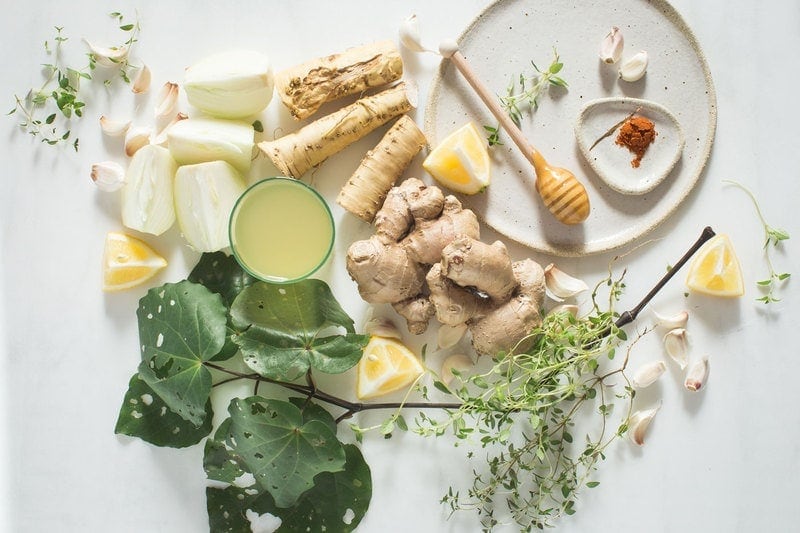
This infused vinegar is an old herbal folk recipe that has been around for an age. I was first introduced to it as ‘Fire Cider’ through American Herbalist Rosemary Gladstar’s book, Herbal Recipes for Vibrant Health. I believe the original recipe is indeed her own, a punchy sweet but firey tonic that will clear those sinuses in a pinch, provide ample anti-microbial properties, support your immune response, get the blood flowing, and aid in digestion. The perfect remedy to have on hand over winter.
The ingredients used are all the best examples of food as medicine, and better yet, they are all things you will find readily available to you – in fact you’ve probably got most of these in your kitchen already!
Perhaps the only curly ingredient for some may be the horseradish – I suggest a winter Farmer’s market visit for this, and if you have no luck, enquire and ask a supplier to bring it in for you.
[bctt tweet="Super simple Homemade Immune-Boosting Digestive Tonic: the perfect winter remedy here!" username="laurenglucina"]
I love herbal vinegars because they are able to extract the therapeutic compounds out of a plant, without having to use alcohol. This makes them ideal for people of all ages and sensitivities. Plants such as dandelion, nettles, plantain, lemon balm, lavender, thyme, oregano, nasturtium and chickweed are all fabulous to experiment with. The apple cider vinegar will extract the minerals, some B group vitamins, and essential oils. Generally speaking, a month of extraction is plenty. Once you have strained and bottled your infused vinegar, you can keep it in the pantry for up to a year.
So, I’m sharing my twist on this world-famous 'Fire Cider' recipe, adding a bit of New Zealand to the mix! Kawakawa (my favourite herb) brings some lovely constituents in to help support the digestive system, while raw Manuka honey lends potent antimicrobial activity. I also added lemon and thyme just because they were in the garden for the taking, though thyme is another fantastic natural antimicrobial.

Preparing this recipe really couldn’t be any simpler, you simply wash and chop, crush or grate up all your ingredients, add to a large jar, submerge in raw, unpasteurised (and enzyme-rich) apple cider vinegar, give it a good shake, and let it infuse for four weeks. The apple cider makes for a fantastic solvent and will extract all the good stuff out of the herbs. Once enough time has passed, you decant the mixture and compost the plant material, then add honey to sweeten it up and take the edge off it. Store it in an airtight glass jar as you would a regular vinegar, and take it daily (or just throughout winter) as a tonic.
Word to the wise: this vinegar sure lives up to its name: it’s HOT! It tastes very, therapeutic, shall we say, which I just love. The honey is definitely needed to add sweetness as it is quite spicy and pungent otherwise.
I was laughing at myself the other day because I had made a weekend of stocking up on various ferments and potions in anticipation of winter, and felt like a right Witchy-poo when I stood back to look at my kitchen shelf: a kombucha doing his bubbly ferment thang, a garlic infused honey, a ruby red kraut, and this wonderful Fire Cider! So much fun.
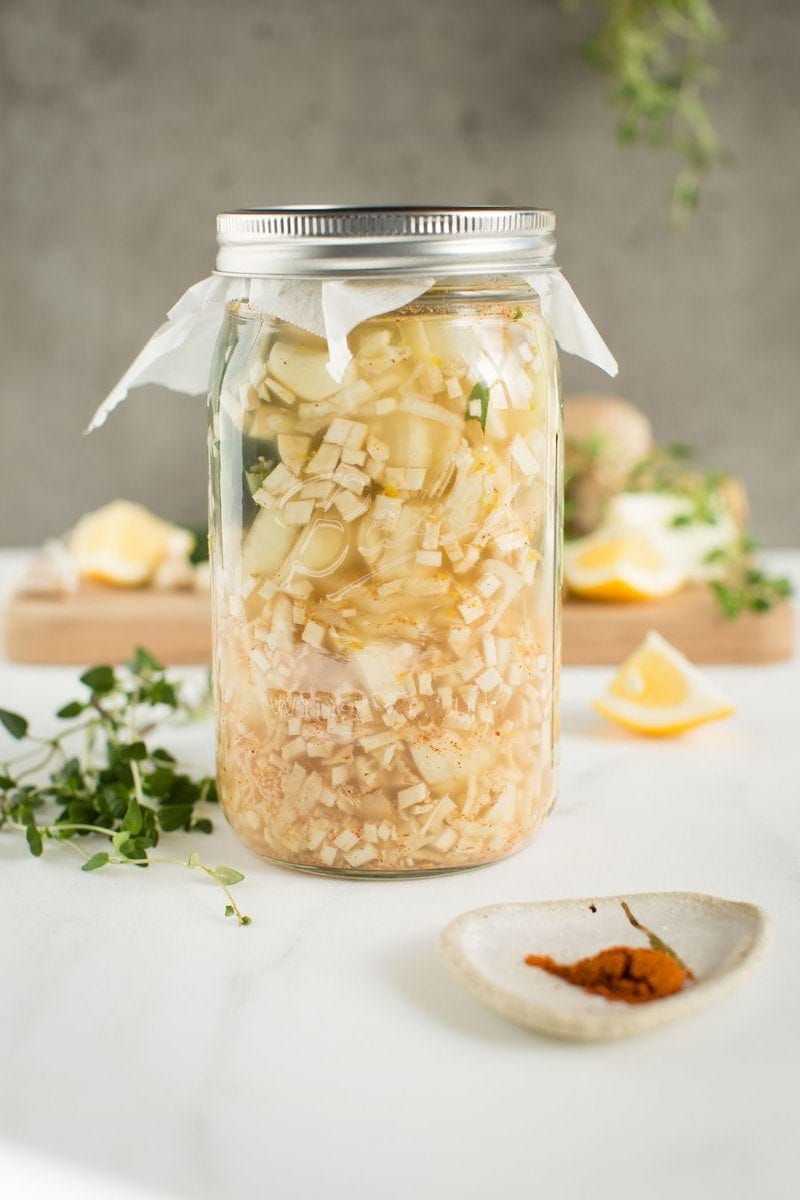
Anyway, a few short words on each of the ingredients below. Happy experimenting, and make it your own – that is what I love about this recipe – the core ingredients are the same, yet each person who makes it adapts and adds or subtracts to make it theirs. Rosemary Gladstar suggests experimenting with turmeric, echinacea and even cinnamon. Other good options would be daikon radish (a fabulous mucolytic, it helps thin and clear mucous), rosemary, oregano, sage and nasturtium.
Horseradish: to clear congested sinuses. Studies have found horseradish (in combination with nasturtium) to have broad-spectrum antibacterial activity against upper respiratory tract infections [1, 2]. It is a classic stimulating herb. Traditionally used to treat influenza. It is also a great digestive aid, easing wind and stomach pains.
Ginger: to promote circulation, enhance gut motility, ease nausea, and bring warmth to a cold constitution. Ginger is particularly soothing to a sore throat as a gargle.
Garlic: antimicrobial – also known as ‘poor man’s penicillin’ – a great home remedy to have on hand to help fight infection. Note – I’ve used so much garlic here – be brave – do it!
Onion: an old remedy for sore ears – traditionally they were wrapped in a cloth and held over the ears as a poultice.
Cayenne: another fabulous circulatory and digestive stimulant. It can help warm up cold hands and feet, as like ginger, it promotes blood flow to the periphery. Make sure you add a little then taste, as you want this to bring a good amount of heat but not burn your mouth.
Lemon: vitamin C!
Kawakawa: a New Zealand native that is most renowned for its tonic effect on the digestive system. It is thought that the more holes the leaves have, the greater the therapeutic value. It has anti-inflammatory actions, eases gastrointestinal spasms, dispels gas and has some antimicrobial properties also. More on kawakawa here.

Thyme: another antimicrobial herb used for respiratory and digestive complaints.
Manuka honey: the greater the UMF factor, the greater the antimicrobial properties. I suggest taking some time to find a good, sustainable brand – most honey suppliers harvest too much honey from the hives, leaving the bees hungry over winter if it weren’t for a supply of sugar-water they then get fed. The equivalent of an inflammatory, junk-food diet, this weakens their immune systems, so it is no wonder our bee colonies are suffering. I personally recommend the Beagles Bees brand if you are in New Zealand.

📖Recipe

Homemade Immune-Boosting Digestive Tonic
Ingredients
- 2 or more cups 500ml + apple cider vinegar (unpasteurised)
- ½ cup grated or chopped horseradish
- ¼ cup grated ginger
- ½ cup garlic cloves crushed
- ½ cup onion chopped
- ¼ teaspoon cayenne powder or to taste – you want it HOT but not burning!
- 2 lemons juice and zest
- 10 Kawakawa leaves chopped
- Good handful of fresh thyme
- ¼ cup raw Manuka honey
Instructions
- Place the horseradish, ginger, garlic, onion, lemon juice and zest, kawakawa leaves and thyme in a sterilised 1 litre glass jar. Cover with apple cider vinegar.
- Place a piece of baking paper over the mouth of the jar, then screw on the lid tightly. You want to have the baking paper as a barrier, as the apple cider will erode the metal lid.
- Shake well. Add the cayenne now and taste – if you love your spices you may want to add a pinch more.
- Fasten the lid and let sit out of direct sun for 4 weeks, shaking vigorously once daily.
- After 4 weeks, decant the infused vinegar into a new jar, and compost the plant material. Add honey – either the full amount, or to sweeten just to your liking. Shake well.
- Enjoy a tablespoon daily as a digestive and immune tonic, or use the vinegar to make dressings with extra punch!
Notes
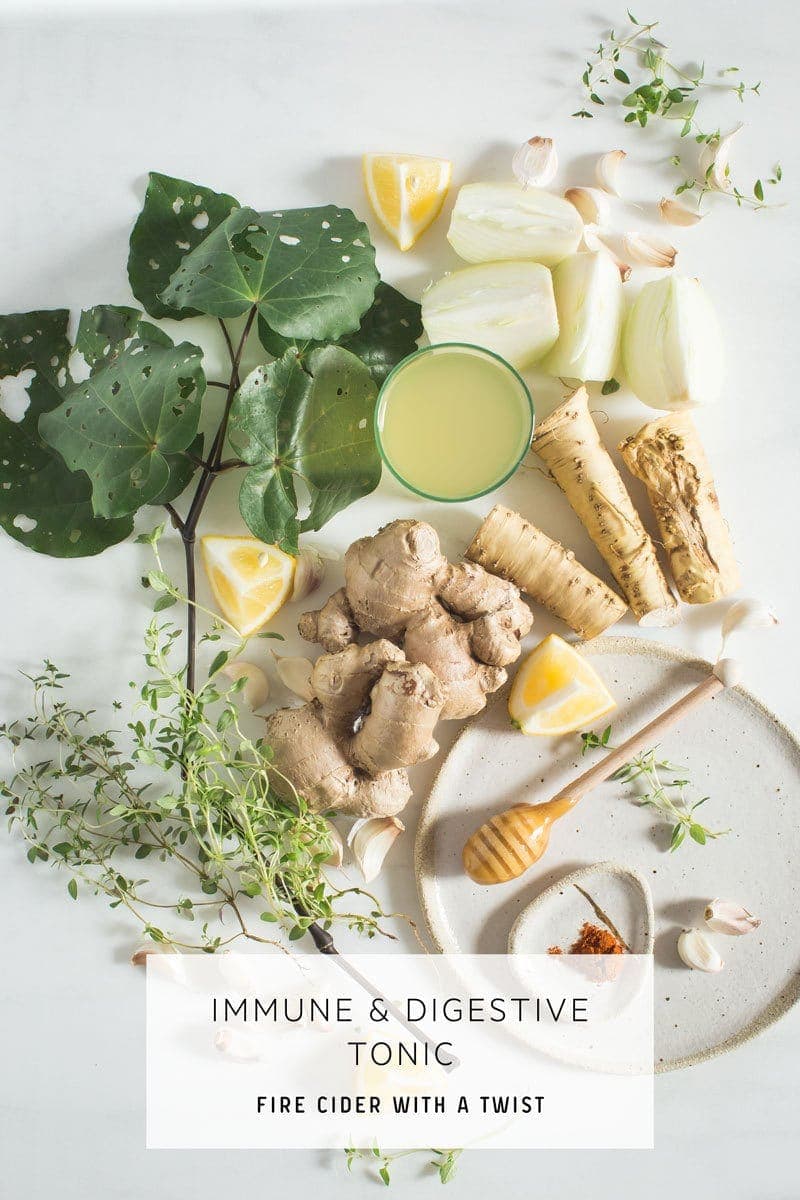
I’d love you to follow me on Instagram,
tag me @ascensionkitchen so I can see your creations!
REFERENCES:
-
FINTELMANN, V., ALBRECHT, U., SCHMITZ, G., & SCHNIKER, J. (2012). EFFICACY AND SAFETY OF A COMBINATION HERBAL MEDICINAL PRODUCT CONTAINING TROPAEOLI MAJORIS HERBA AND ARMORACIAE RUSTICANAE RADIX FOR THE PROPHYLACTIC TREATMENT OF PATIENTS WITH RESPIRATORY TRACT DISEASES: A RANDOMISED, PROSPECTIVE, DOUBLE-BLIND, PLACEBO-CONTROLLED PHASE III TRIAL. Current Medical and Research Opinion, 28(11), 1799-807.
-
CONRAD, A., BIEHLER, D., NOBIS, T., RICHTER, H., ENGELS, I., & FRANK, U. (2013). BROAD SPECTRUM ANTIBACTERIAL ACTIVITY OF A MIXTURE OF ISOTHIOCYANATES FROM NASTURTIUM (TROPAEOLI MAJORIS HERBA) AND HORSERADISH (ARMORACIAE RUSTICANAE RADIX). Drug Research, 63(2), 65-68.

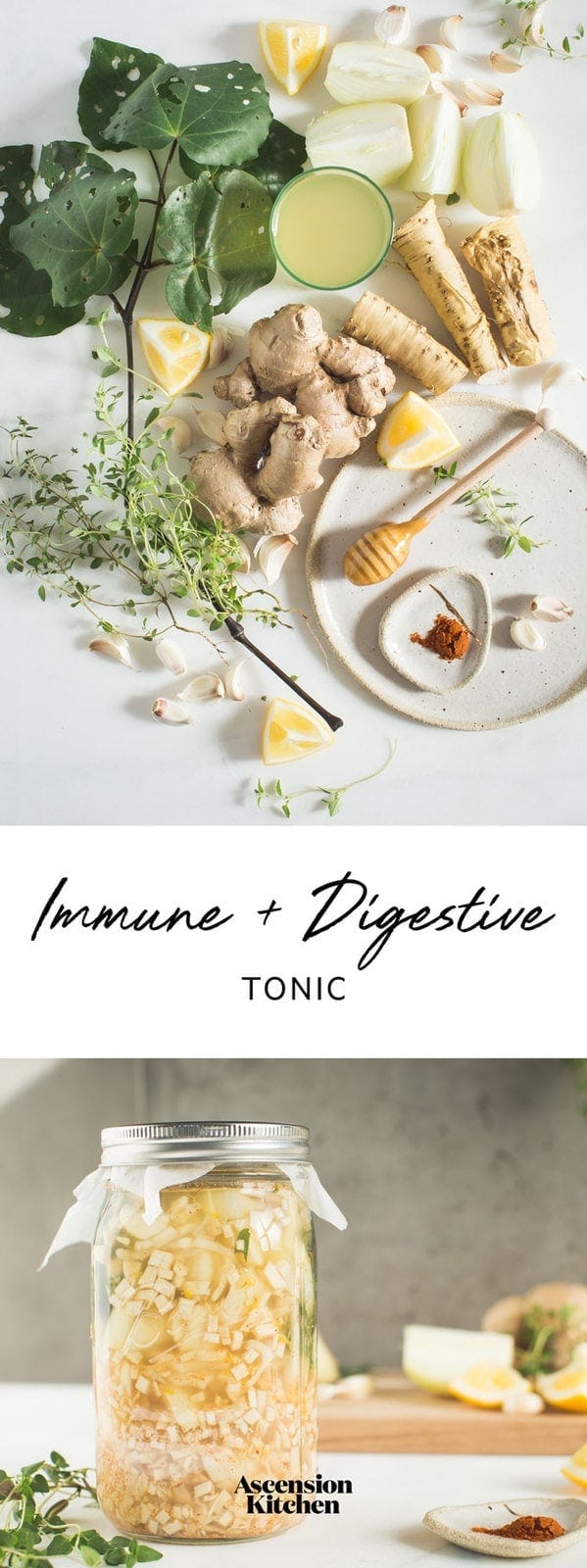


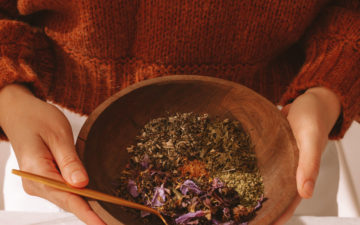
Ask me anything